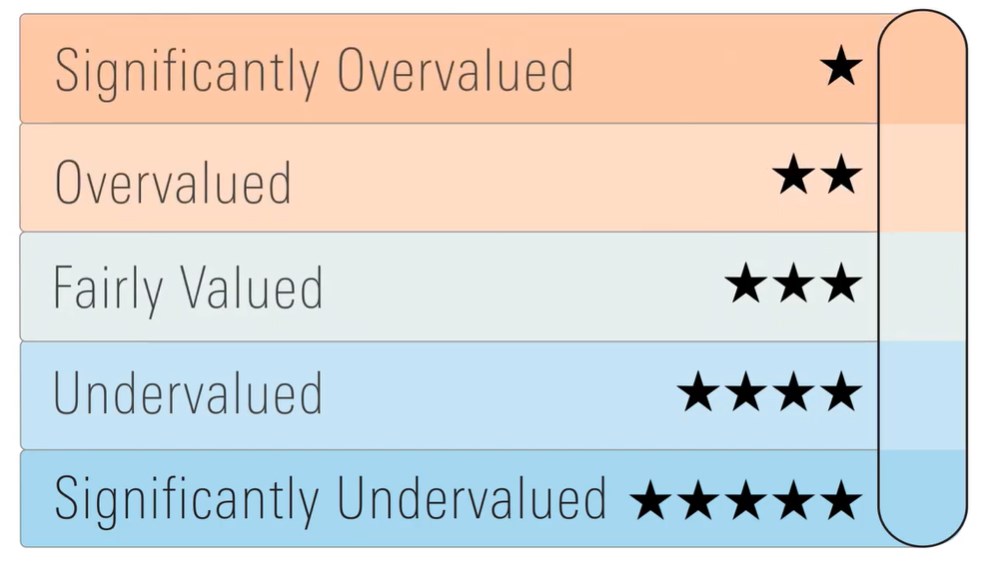
At Morningstar, we calculate the Price to Fair Value (P/FV) of the world's most important stocks using the Morningstar Fair Value Estimate. Based on these estimations we can deduce whether a given stock is expensive or cheap. If the P/FV of a stock is above 1, it is considered overvalued; if the P/FV is below 1, it is considered undervalued.
Another way to assess whether stocks are expensive, cheap or correctly valued is through the Morningstar Rating for Stocks, which has an advantage over the P/FV in that it incorporates a level of uncertainty in the estimations. Two companies can have a very similar P/FV, but that does not necessarily translate into the same Morningstar rating.
Therefore, looking at the number of stocks getting 4 and 5 stars (stocks considered as a buy-in green in the chart below) and the number of stocks with 1 or 2 stars (considered as a sell - in red) can find a better clue as to whether the stock market is cheap or expensive.
Is the Stock Market Cheap or Expensive Right Now?
September was a rough month for stocks. The Morningstar Global Markets index, which reflects the performance of world stock markets, lost 8.79%.
This month, the percentage of stocks with 4 or 5 stars from our entire database (around 1700 companies covered by our equity analysts team) increased significantly from around 54% at the start of the month to around 69% at the end (the maximum reached so far this year was in June with 60%); meanwhile the percentage of stocks with 1 or 2 stars, fell to 8%, nearly halving from 15% at the start of the month. We can say that the global markets, according to our analysts, are mostly cheap right now.
Canadian Stocks and U.S. Stocks are Both Mostly on Sale
If we compare the ratings between the United States and Canada, we can say that both countries are similarly discounted. In Canada, stocks appear to be slightly cheaper, with 14% of stocks trading in the 1 and 2-star range, compared to 8.5% in the U.S.
As for 4 and 5-star stocks, they represent 59% of our Canadian universe compared to 64% in the United States.




















